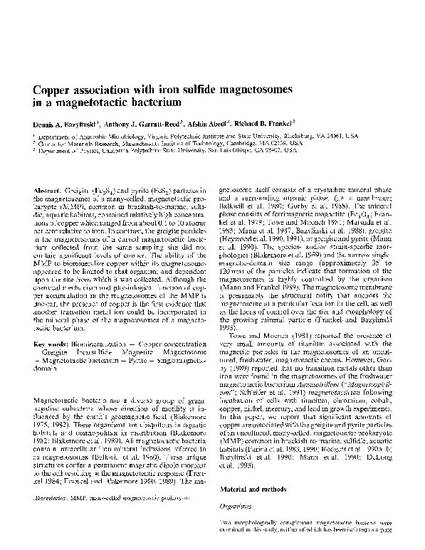
Greigite (Fe3S4) and pyrite (FeS2) particles in the magnetosomes of a many-celled, magnetotactic prokaryote (MMP), common in brackish-to-marine, sulfidic, aquatic habitats, contained relatively high concentrations of copper which ranged from about 0.1 to 10 atomic per cent relative to iron. In contrast, the greigite particles in the magnetosomes of a curved magnetotactic bacterium collected from the same sampling site did not contain significant levels of copper. The ability of the MMP to biomineralize copper within its magnetosomes appeared to be limited to that organism and dependent upon the site from which it was collected. Although the chemical mechanism and physiological function of copper accumulation in the magnetosomes of the MMP is unclear, the presence of copper is the first evidence that another transition metal ion could be incorporated in the mineral phase of the magnetosomes of a magnetotactic bacterium.
Available at: http://works.bepress.com/rfrankel/86/
